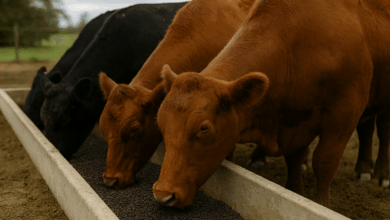Feedstock-to-Biochar: How Source Material Impacts Application

Biochar, a stable form of carbon produced by pyrolyzing biomass in the absence of oxygen, has gained global attention for its ability to enhance soil health, sequester carbon, and support sustainable agriculture. The effectiveness of biochar depends largely on the type of feedstock used in its production.
Feedstock refers to the raw organic material subjected to pyrolysis, and different types yield biochar with varying properties used for various applications. Biogenic feedstocks have a higher carbon content and thus, energy density when compared to non-biogenic (plastics) feedstock. Therefore, biogenic feedstocks become preferable for producing high quality biochar. Within biogenic feedstocks, there are two categories – non-woody and woody feedstock. The latter yields biochar with lower moisture, ash and higher surface areas, with more calorific energy opportunity.
Common Biochar Feedstocks
| Feedstock | Description | Typical Applications | Characteristics |
| Wood (Hardwood/Softwood) | Logs, branches, sawdust, wood chips | Soil amendment for agriculture and forestry, carbon sequestration, water filtration, livestock bedding | High carbon content, low ash, high porosity and surface area, low bulk density. |
| Agricultural residues | Crop residues like corn stalks, rice husks, wheat straw | Improve soil fertility and water retention, reduce nutrient leaching, animal feed supplement (when biochar is co-composted) | Moderate to high ash content, variable nutrient profiles, medium porosity. |
| Manure and animal waste | Cattle, poultry, pig manure | Soil conditioner to improve nutrient retention, odour control, pathogen reduction, waste management, organic fertiliser. | High nutrient content, high ash content and lower carbon stability. |
| Nut shells | Coconut, walnut, almond shells | Activated carbon production, soil amendment, filtration media for water and air purification | High lignin and carbon content, low ash and moisture, dense, high surface area. |
| Bamboo | Fast-growing stalks, sustainable source | Soil improvement, erosion control, carbon storage, industrial uses, bioenergy | Fast growing renewable, high carbon content, moderate ash content. |
| Sewage sludge | Waste from wastewater treatment | Heavy metal immobilization in soils, waste management, land reclamation | Moderate to high ash content, pathogenic, high in nitrogen and other heavy metals, often more effective as a single- metal removal system. |
| Municipal solid waste | Organic fractions of household waste | Waste reduction, soil amendment (if clean and uncontaminated), bioenergy feedstock | Risk of contaminants, heterogenous. |
| Grasses and weeds | Switchgrass, miscanthus, invasive plants | Soil restoration, carbon capture, bioenergy feedstock | Fast growing renewable |
In a 2019 heavy metal removal study, biochar produced from woody based feedstock, agricultural residues and sewage sludge were all tested in their ability to adsorb and remove heavy metals from aqueous solutions. Sewage sludge had the highest adsorption capacity followed by woody based feedstock.
For more information on the eligible biochar feedstock options, review relevant biochar protocol for your region. Links to the USA and Canada Biochar Protocol and European Biochar parameters are included below.
https://www.european-biochar.org/media/doc/2/36_702en.pdf
Applications of Biochar
What the biochar is being used to treat, heavily contributes to the type of feedstock selected, feedstock is one of the most decisive factors influencing biochar characteristics and thus, suitable applications.
Each application requires a different characteristic as outlined in the table above. Raw feedstock has different chemical compositions, which means different gases are released during pyrolysis. Feedstock (woody feedstock) rich in lignin produces favourable biochar conditions including higher carbon content and stable aromatic rich structures. Different feedstocks have different compositions (cellulose, hemicellulose and lignin).Other parameters include pH, contaminants and moisture content of biochar feedstocks.
See a summary of various applications below:
- Soil Amendment: Improves soil structure, increases water retention, enhances nutrient availability, and promotes beneficial microbial activity.
- Carbon Sequestration: Stabilizes carbon in the soil, reducing greenhouse gases.
- Waste Management: Converts organic waste into valuable products, reducing landfill needs.
- Water Treatment: Used as a filter medium to remove contaminants and heavy metals.
- Animal Husbandry: Reduces odours and pathogens in animal bedding and manure.
- Energy Production: Biochar production is often linked with bioenergy recovery and green renewable energy production (syngas, bio-oil).
- Construction: Carbon sequestration in carbon intensive industries.
The choice of feedstock plays a crucial role in determining the characteristics and effectiveness of biochar for various applications. Whether derived from agricultural residues, forestry waste, manure, or other organic materials, each feedstock imparts unique physical and chemical properties to the resulting biochar. These differences influence not only its performance in soil amendment, carbon sequestration, and pollution remediation but also its economic and environmental viability. As research continues to advance, a better understanding of feedstock-specific benefits and limitations will be key to optimizing biochar production and maximizing its potential across diverse sectors.



